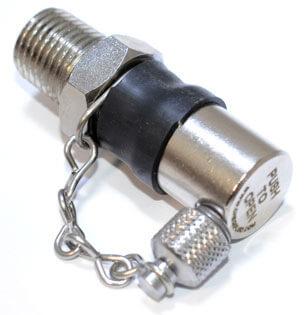-
myLab
-
Services
-
- Acid Number
- Analytical Ferrography
- Base Number: ASTM D2896 vs. D4739
- Crackle Test: Monitoring Water in Used Oil
- Demulsibility
- FTIR Direct Trend Methodology
- Fuel Distillation (ASTM D86)
- ISO Particle Count
- Karl Fischer Water Titration
- Optical Particle Classification (OPC)
- Remaining Useful Life Evaluation Routine (RULER)
- SEM-EDS Wear Debris Analysis
- Total Magnetic Iron (TMI)
- Varnish Potential
-
-
Sampling
-
- Coolant Sampling Procedures
- Grease Sampling Procedures
- Oil Sampling Basics (Short Course)
- Oil Sampling Procedures (Video)
- Oil Sampling Procedures: Good-Better-Best (PDF)
- Sample Collection Basics
- Sampling Oil Using a Drain Plug
- Sampling Oil Using a Pushbutton or KST-Series Valve
- Sampling Oil Using a Sample Pump
- Sampling Oil Using Thread-On Probe Style Valves
- Used Oil Filter Sampling
- Sampling from Filter Carts
-
-
Data Interpretation
-
- Analytical Ferrography Reporting
- Basic Testing Interpretation (PDF)
- Common Wear Mechanisms (PDF)
- DEF Specifications: ISO 22241
- Oil Cleanliness: ISO vs. NAS
- Potential Source of Spectrometry Metals (PDF)
- Reading the OA Report (PDF)
- Understanding ISO Particle Counts (PDF)
- Wear Metal Origins (PDF)
- Comparison: Wear Debris Analysis Technologies
- DEF Testing: Data interpretation
- Why Diesel Fuel Dilution is Bad for Your Engine
-
- Data Interpretation Process (Video)
- Data Interpretation: Compressors (Video)
- Data Interpretation: Diesel Engines (Video)
- Data Interpretation: Grease Analysis for Wind Turbines (VIDEO)
- Data Interpretation: Hydraulics (Video)
- Data Interpretation: Natural Gas Engines (Video)
- Data Interpretation: Oil Analysis for Wind Turbines (Video)
- Data Interpretation: Reducers (Video)
- Data Interpretation: Turbines (Video)
-
-
Whitepapers
-
Success Stories
-
FAQ
-
Release Notes
< All Topics
Print
KP Pushbutton Sample Valve
PostedJanuary 10, 2022
UpdatedJuly 22, 2025
ByFluid Life
For Pressurized Systems
The KP Pushbutton Series sample valve can be used to take samples on operating equipment with no sample probe needed. Sample valves allow you to reduce the time needed to extract a sample, while gaining a more representative sample and avoiding external contamination for a more accurate oil analysis result.
Applications
Features
- Patented elastomeric vacuum tight valve seals
- Reliable dual sealed design tested at 7,800 psi for one million cycles
- Automatic valve shut off
- Low purge volume
- Carbon steel with Corrosion resistant zinc-nickel plating
- Locknut available for extra protection against high vibration
Specifications
- Sampling Range: 5 -750 psi (0.03 – 5.17 MPa)
- Working Pressure: 6000 psi (41.4 MPa)
- Seal Material Temperature Range:
- Nitrile: -40C – 115C (-40F – 239F)
- Viton: -26C – 204C (-15F – 400F)
- EPDM: -50°C – 150°C (-58F – 302F)
- Valve Material: Carbon steel with corrosion resistant zinc nickel plating
- Valve Overall Size (L x W): 2” x 1.5” (approx.)
Download PDF
Buy Online
Related Articles
Sampling Procedures: KP Pushbutton Valve
Oil Sampling Procedures (PDF)
Webinar: Oil Sampling Procedures
Short Course: Oil Sampling Basics
Table of Contents

